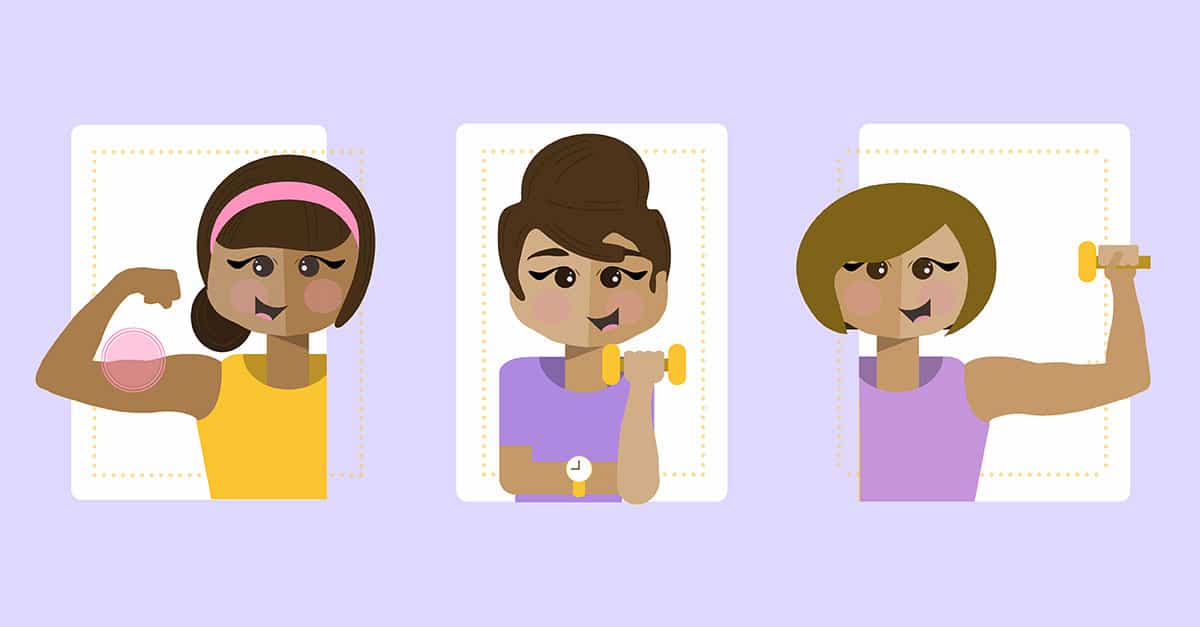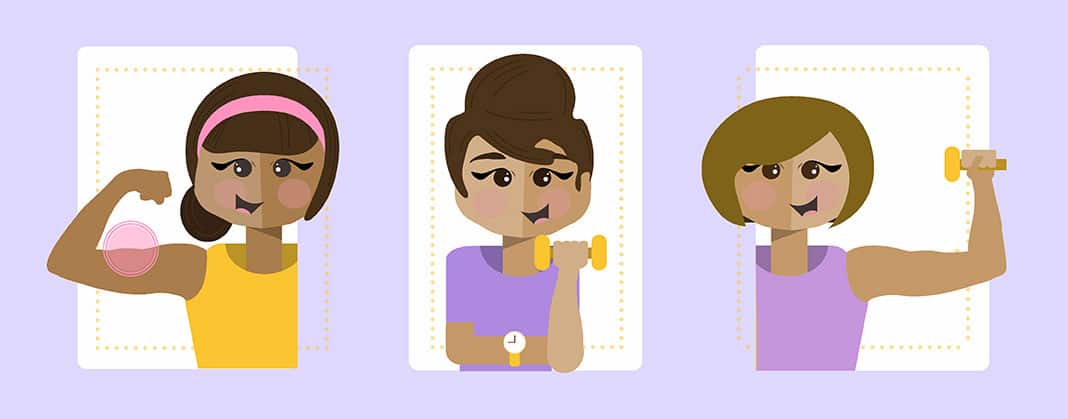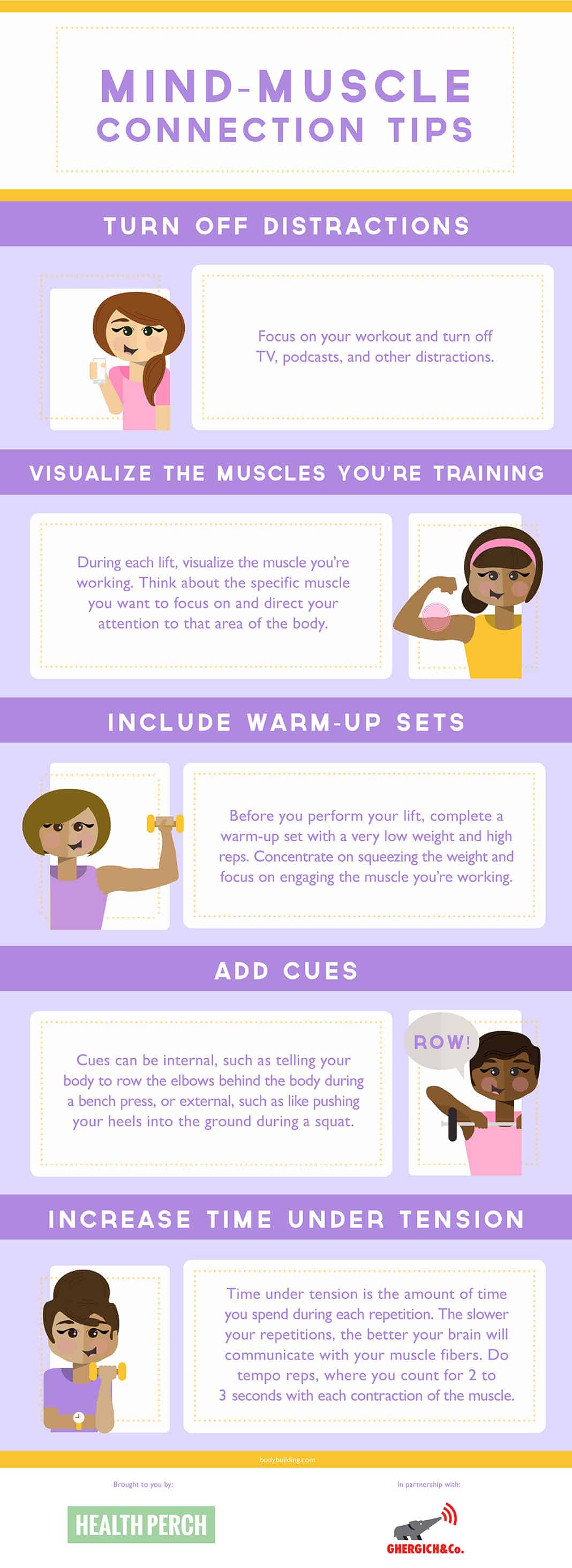How connected are you during your workouts? Life is full of distractions which can get in the way of a solid workout whether you exercise at home or in the gym. TVs, phones, and mental distractions such as work or family stress can leave you with lackluster results in the gym.
Cue the mind-muscle connection. Getting rid of distractions allows you to tap into your true strength potential and build quality muscle. Let’s dig into what it means to connect your mind and muscles, plus the best strategies to do so.
Unfolding the Mind-Muscle Connection
Simply put, the mind-muscle connection is a conscious and deliberate muscle contraction. It’s the ability to focus the tension you create during exercise on a specific muscle or region of muscles in the body, which is the difference between passively and actively moving the weight.
When you focus on using specific muscles to create contractions, the brain calls upon a greater percentage of high muscle fibers to complete the task. This also prevents innervating of muscle fibers not in use. By creating tension in the right muscles, your body is better able to gain strength and size in all the right places.
Internal and External Focused Attention
Focused attention is how well the brain can concentrate on a specific activity for a given amount of time. This is a large part of cognitive development and works well during resistance training.
Two types of attention are important during exercise: internal focus and external focus. Internal focus is when you concentrate on the specifics of what your body is doing. For example, during a crunch your mind focuses on contracting the anterior abdominal muscles while flexing the spine.
An external focus is how your body relates to the environment during exercise. On a leg press machine, for instance, the external focus is to push the platform away from your torso with your feet. Though external and internal focus improve performance, evidence shows that internal focus plays a more integral role in muscle growth and development.
To improve your mind-muscle connection, focus your attention on the muscles required to move the weight. During biceps curls, for instance, think about how the muscles in the front of the arm contract to move the weight toward your shoulder. (This goes for all strength exercises.)
Choosing One Cue at a Time
Cueing is a tool used by coaches and trainers to help clients improve movement and performance. You can use cueing on your own to help improve how your brain connects to the right muscle fibers. Pay attention to your form and note what you want to work on.
Once you come up with a few cues, work on one at a time. Take the bench press for example: You have set up, lowering the bar, and pressing the bar.
The first cue to work on is proper set up. This is positioning your body on the bench, getting tight and braced in the upper body, and removing the bar from the rack safely. Focus your attention on these skills before your brain automatically sets up with proper form.
When this skill is acquired, move on to lower the bar with solid mind-muscle connection. Building on your skills over time helps improve attention because you focus on movement in segments rather than trying to master everything at one time.
More Time Under Tension
Time under tension during resistance training is a key component for muscle building. The more time under tension you spend during a lift, the stronger and bigger your muscles grow. Time under tension can be increased in various ways.
One way is to pause during peak contraction. For example, you can hold a glute squeeze at the top of a bridge, pause during the flexed position during a bicep curl, or hold at the bottom of a push-up.
Another way is to slow down the eccentric, or elongating portion of the exercise. Adding a 3-second eccentric movement improves your mind-muscle connection because your mind automatically focuses on controlling the slowed down the movement.
Additionally, isometric contractions are another great way to increase time under tension and improve how your brain relates to the muscle. Planks are a great example of isometric contractions. Loaded carries, isometric chin ups, and iso-hold squats are a few more ideas.
Turn Off Distractions
It’s a misconception that humans can multitask, and this doesn’t just relate to patting your head while rubbing your belly. It may seem easier to get through your workout if you divert your attention from the pain in your gains.
However, the opposite is true. Turning off distractions, including your phone and television, allows your brain to focus on the task at hand. Music is a great way to energize your body and get into your workout, but you may be better off leaving the audiobooks and podcasts for the treadmill.
Putting it All Together
Your mind has plenty of ways to connect with your muscles during exercise. Choose one thing to focus on at a time and build this skill as you become more in tune with your body.
If you are newer to exercise, it’s best to start by turning off all distractions. Eccentric contractions are the easiest to learn and a good way to build muscle fast. If you’re a gym veteran, focus on concentric and isometric contracts, and build cues into your training in order to tap into your muscle-building potential.


